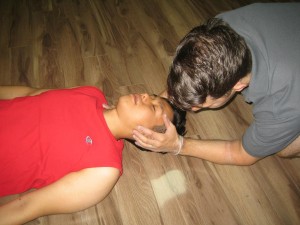Depending on where you work and what allied health profession you are in, you may or may not be required to have Pediatric Advanced Life Support (PALS) certification. Getting trained in PALS will give you the best CPR skills to manage pediatric patients – skills that vary from CPR skills for adults. When CPR is given to very young children – infants and toddlers – some principles stay the same but there are certain differences. It has then become very important for healthcare providers to be trained in both adult and pediatric CPR.
Basis of CPR (cardiopulmonary resuscitation)

CPR skills are based on a series of studies first done during the 1950s and the decades that followed it. Because CPR was first used during surgery, a lot of factors had to be accounted for such as blood loss, stress, and anesthesia. To be able to generalize the efficacy of the skill, the studies included CPR use intra and post-operatively. Thus, the lifesaving skill of CPR was created and formally supported by scientific study.
Within the next several years, the use of CPR was seen both in and out of the hospital. Whether or not a person was trained in healthcare, the American Heart Association would actually recommend him or her to get trained in at least basic CPR. Statistics reveal that over 300,000 cardiac arrest actually happen outside of the hospital – meaning that the first responder to a situation would typically be a bystander who, if the victim is lucky, would be a trained CPR rescuer.
PALS and advanced training
Pediatric Advanced Life Support is one of two advanced CPR courses, the other being ACLS – Advanced Cardiac Life Support for adult victims. It runs over two days, 16 hours in total. It also has accompanying re-certification program that runs between 6 hours and 20 minutes and 8 hours and 20 minutes. PALS certification focuses on the following topics:
- Chest compressions
- Defibrillation
- Ventilation (mouth-to-mouth, bag valve masks)
- Pediatric pharmacology
- Use of equipment (mechanical ventilators, ECGs)
Cardiac arrest in children
When an adult gets cardiac arrest, the most common reason is a pre-existing cardiac problem. However, when children get heart attacks, the most common reason is respiratory failure. When very young children experience respiratory problems, it begins a cascade of symptoms that lead to eventual heart failure. In adults, poor oxygenation of the tissues is due to poor circulation. In children, it is due to both inadequate ventilation as well as circulation. Principles when giving compressions and ventilation remain the same but their importance now becomes equal with one another.
Certificates in PALS training
Complete all the requirements and you will be awarded a PALS training certificate. It is valid for two years before it has to be renewed through a re-certification class. We always remind our trainees that they need to sign up for re-certification before their credentials expire. We do not allow trainees with expired certificates to renew; they have to retake the program.
